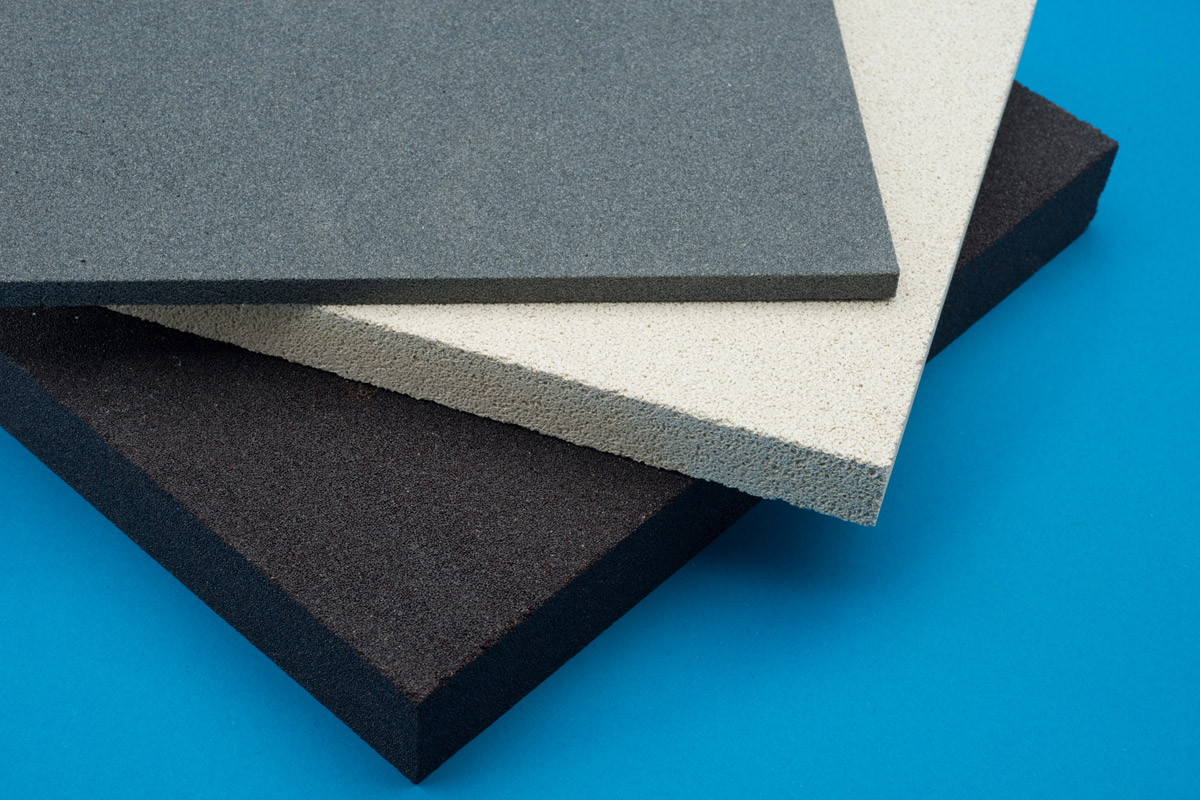Fluidisation or activation of finely divided materials by the use of diffused air has been extensively developed during the past 50 years, particularly for the handling of powders in bulk.
Fluidisation is the process of moving, transporting and treating powders and other granular materials by injection of air to make the powder act as a fluid. This means that air passes through a porous filter material where it is finely distributed and then creates a cushion or film to considerably reduce the friction between material and base.
Also, the air is mixed with the material in such a way that the friction between the particles is reduced, allowing the material to flow like water.
Experience has shown that porous ceramic tiles, used as the permeable membrane through which air is injected and which also supports the powder bed, provide the most efficient means of ensuring the even dispersion of gas, which is essential to the success of an operation.
Porous Ceramic Tiles
The main product supplied by Mantec Technical Ceramics for fluidisation applications is the Porous Ceramic Tile. These are arranged either in a grid to create a fluidised bed, or in series as a fluidised conveyor for transporting powder from one location to another. Another application is to mount the tiles on the side of powder silos to aid flow and prevent solidification.
 Porous ceramic tiles are subject to close control during manufacture. Individual tiles are matched one against the other to ensure even overall permeability and the grades used present sufficient resistance to spread the air evenly over the whole area. These porous tiles are manufactured from Mantec’s Pyrolith and Coralith materials.
Porous ceramic tiles are subject to close control during manufacture. Individual tiles are matched one against the other to ensure even overall permeability and the grades used present sufficient resistance to spread the air evenly over the whole area. These porous tiles are manufactured from Mantec’s Pyrolith and Coralith materials.
Please click here for our Material Data Sheet.
Air or gas fed into a compartment or plenum chamber beneath the tiles can only escape by way of the ceramic tiles into the powder above. When velocities are high enough this induces fluidisation. In most cases no more than local fluidisation is necessary to bring about movement in the powder.
Fluidisation Requirements
Typical fluidisation air flow requirements are:
8 to 12 cubic feet per minute (226 to 340 litres per minute) at 1 to 2 psig (69 to 138 mbar) per square foot (0.1 m2) of ceramic tile area.
The pressure loss through the bed of material above the tiles must be allowed for separately. As a general guide, powders having a bulk density of 950 to 1500 kg/m3 show a pressure loss of approximately 50 mbar per metre of bed height. Powders with a bulk density of 1500 to 2250 kg/m3 typically show a pressure loss of 100 mbar per metre of bed height.
Installation Data
Porous ceramic tiles should be installed in a supporting framework and sealed into position by cement or similar bonding agent. A range of cements suited to this application are available.
Typical Applications
The Fluidisation principle is used on many powders:
- Coal Dust
- Alumina
- Sand
- Fly Ash
- Salt
- Gypsum
- Zircon
- Flour
- Sugar
- Molochite
- Cement
- Soda Ash
In Various Process:
- Silo/Hopper Discharge
- Powder Mixing
- Fluidised Burners
- Fluidising Conveyors
- Fluidisation Tanks
- Fluid Bed Dryers


